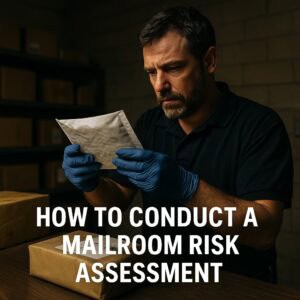Verbal de-escalation is a crucial skill for effectively managing potentially volatile situations and preventing violence. It involves using purposeful actions, communication techniques, and body language to diffuse tension and calm individuals who may be agitated or confrontational. By prioritizing personal safety and the well-being of others, those skilled in verbal de-escalation can significantly reduce the risk of violent incidents in various settings, such as critical infrastructure locations, workplaces, schools, businesses, and hospitals.
There are several key techniques to consider when attempting to de-escalate a situation. These include empathetic listening, maintaining a calm and composed demeanor, using non-threatening body language, creating trust, and conveying respect for the individual’s feelings. By employing these methods, the chances of successful, non-violent conflict resolution greatly increase.
It is essential for people from all walks of life to master these skills, as they may potentially encounter volatile situations during normal life. Equipping individuals with the knowledge and expertise to navigate high-stress environments can ultimately lead to safer and more productive interactions as well as improved overall community well-being.
Understanding Verbal De-escalation
Verbal de-escalation is a set of strategies and techniques employed to prevent or defuse potentially violent situations. These methods focus on using communication skills, both verbal and non-verbal, to reduce tension and avoid aggression. The primary goal of verbal de-escalation is to establish a connection with the individual, enabling them to feel understood and supported, ultimately resolving the conflict peacefully.
Individuals with mental health issues may be more prone to experiencing heightened emotions and potentially aggressive behavior. It is crucial for those interacting with such individuals to be skilled in verbal de-escalation techniques. This can help ensure that the person’s needs are addressed and that the situation remains safe for all parties involved.
Experience plays a significant role in successfully applying verbal de-escalation strategies. Skilled professionals can recognize the early signs of agitation and adjust their approach accordingly, using techniques such as active listening, empathy, and validation to alleviate distress. They also employ non-verbal cues like maintaining a comfortable distance, using open body language, and avoiding sudden movements, which can further contribute to the calming effect.
Some key principles to remember when attempting verbal de-escalation include:
- Staying calm and composed, as a calm demeanor can help reduce the intensity of the situation.
- Speaking in a soothing, yet assertive tone, as this can convey confidence and reassurance.
- Offering choices and solutions that the individual can consider, giving them a sense of control in the situation.
- Avoiding an argumentative or confrontational stance, as this can further escalate the tension.
Verbal de-escalation is an essential skill in conflict resolution, particularly when dealing with individuals experiencing mental health challenges. By using effective communication techniques and drawing on personal experience, professionals and caregivers can create a safe and supportive environment in which to address the individual’s needs and resolve the situation peacefully.
Identifying Signs of Agitation
Recognizing Aggression
Aggression can manifest in various ways, and it is crucial to recognize the signs early to employ verbal de-escalation techniques.
Some common indicators of aggression include:
- Increased irritability and impatience
- Raised voice or yelling
- Intense, piercing eye contact
- Aggressive body language, such as flared nostrils or clenched fists
- Sudden, uncontrolled motor activity
By identifying these signs, one can approach the situation more tactfully, preventing potential violent incidents.
Detecting Distress
On the other hand, distress may exhibit itself more subtly. Recognizing the signs of distress allows for the timely application of de-escalation strategies.
Common signs of distress include:
- Rapid or shallow breathing
- Avoiding eye contact or excessive fidgeting
- Emotional outbursts, such as crying or excessive anger
- Changes in speech patterns, like rapid speech or stammering
- An increase in motor activity, such as pacing or restless movements
Understanding the nuances of both aggression and distress is crucial for addressing agitation and employing the appropriate verbal de-escalation techniques. By being confident, clear, and knowledgeable in identifying these signs, one can effectively mitigate the risk of escalation and maintain control of the situation.
De-escalation Techniques
Using Appropriate Tone
An important technique in verbal de-escalation is using an appropriate tone of voice. Speak calmly and confidently, maintaining a neutral and clear tone. The goal is to convey understanding, empathy, and a sense of control over the situation. It’s essential not to raise your voice or sound confrontational, as this could escalate the situation.
Non-verbal Communication
In addition to the tone of voice, non-verbal communication plays a significant role in de-escalation. Utilize effective facial expressions, maintain a relaxed posture, and avoid making sudden or threatening movements. Appropriate body language can help convey calmness and understanding, while also making the person feel more at ease.
Building Rapport and Boundaries
Establishing rapport with the person in a potentially violent situation can help de-escalate tensions. Focus on listening to their concerns, validating their feelings, and avoiding any judgmental responses. Maintain boundaries by refraining from sharing too much personal information or being overly familiar. Personal space should also be respected, keeping a reasonable distance that does not feel invasive or intrusive.
Emotional Regulation Techniques
When facing a heated situation, mastering emotional regulation techniques can be the key to successful de-escalation. These techniques include taking deep breaths, acknowledging the feelings and concerns of the person, and maintaining self-awareness. Focus on keeping your emotions in check and avoid becoming reactive or defensive, as this can further escalate the situation.
By incorporating appropriate tone, non-verbal communication, rapport building, boundaries, and emotional regulation techniques in your approach, you can effectively de-escalate potentially violent situations while ensuring safety for all parties involved.
Safety and Containment Measures
When dealing with potentially violent incidents, implementing safety and containment measures is crucial. These measures help maintain safety for everyone involved. In this section, we will discuss two important sub-sections – Physical Restraints and Seclusion, and Managing Aggressive Behavior.
Physical Restraints and Seclusion
Physical restraint and seclusion are coercive interventions used as a last resort when other de-escalation techniques have failed or are not appropriate. They should be applied by trained professionals only and should prioritize the safety and well-being of all parties. Here are some key aspects to consider in these situations:
- Safety: Ensure that no one is injured during restraint or seclusion and that those involved are closely monitored until the individual’s behavior has de-escalated.
- Communication: Clearly explain the purpose of the restraint or seclusion to the individual. Keep communication lines open with other staff members to ensure coordinated efforts.
- Duration: Use restraint or seclusion for the shortest amount of time necessary. Continuously assess the situation and release the individual once the risk of violence has been mitigated.
- Documentation: Record all instances of restraint and seclusion in detail, including the reasons for implementation, steps taken prior to the intervention, and the outcome.
Managing Aggressive Behavior
Effectively managing aggressive behavior can help maintain safety during potentially violent incidents. Some strategies include:
- Establishing rapport: Build trust with the individual by demonstrating empathy and understanding of their situation. Use active listening skills and a non-threatening tone of voice.
- Maintaining a safe distance: Position yourself in a way that ensures personal safety while not provoking the individual. Avoid cornering them or invading their personal space.
- Using calming techniques: Employ techniques such as deep breathing, relaxation exercises, or even distraction to help diffuse the tension in the situation.
- Setting limits: Clearly define acceptable and unacceptable behaviors and appropriately enforce consequences for dangerous behavior.
- Providing choices: Offer alternative solutions or options for the individual to choose from, showing that they have some control over the situation.
By effectively utilizing these safety and containment measures in combination with verbal de-escalation techniques, it becomes more likely that potentially violent incidents can be prevented or managed, ensuring the well-being of everyone involved.
Preventing and Reducing Violent Incidents
| Key Points | Summary |
|---|---|
| Definition | Verbal de-escalation is a set of communication strategies used to prevent or defuse potentially violent situations. |
| Techniques | Empathetic listening, maintaining a calm demeanor, using non-threatening body language, creating trust, and conveying respect for the individual’s feelings. |
| Signs of Aggression | Increased irritability and impatience, raised voice or yelling, intense eye contact, aggressive body language, and sudden uncontrolled motor activity. |
| Signs of Distress | Rapid or shallow breathing, avoiding eye contact or excessive fidgeting, emotional outbursts, changes in speech patterns, and an increase in motor activity. |
| Safety and Containment Measures | Physical restraint and seclusion as a last resort, maintaining a safe distance, using calming techniques, setting limits, and providing choices. |
Implementing verbal de-escalation techniques is a critical step in avoiding violent incidents and mitigating their severity and potential for injury. These tactics involve using both verbal and non-verbal communication to reduce tension, calm agitated individuals, and prevent aggressive behavior from escalating further.
One effective technique is active listening, which entails giving the person your full attention, making eye contact, and periodically nodding to show understanding. This approach demonstrates empathy and can often help defuse a volatile situation. In addition to active listening, it is important to maintain a neutral tone and use clear and concise language to communicate effectively with the agitated individual.
Another crucial aspect of verbal de-escalation is recognizing early warning signs, such as increased heart rate, perspiration, nausea, indecisiveness, and hair rising on the back of the neck. Keeping an eye out for verbal warning signs of violence, including threats and confused thinking, can help prevent incidents from escalating. Properly identifying these indicators allows for a timely response, which may involve seeking additional support if the situation becomes more dangerous1.
Individual training is essential for successfully implementing de-escalation techniques. Although there is limited evidence connecting individual staff training programs with a reduction in violent incidents2, well-trained staff can play a pivotal role in managing patient aggression and reducing potential injuries. Ongoing education and practice on verbal de-escalation techniques can increase confidence and competence in handling tense situations.
In conclusion, preventing and reducing violent incidents relies on effective verbal de-escalation techniques, early identification of warning signs, and proper staff training. By incorporating these strategies into daily practice, it is possible to not only reduce the likelihood of violent incidents but also to mitigate their severity and potential for injury.
Frequently Asked Questions
What are some effective methods for handling aggressive behavior?
There are several methods to handle aggressive behavior, including verbal de-escalation techniques, empathy, and establishing a safe, non-threatening environment. Maintaining a calm demeanor, using open body language, and actively listening to the person can help in reducing the level of arousal in a potentially violent situation.
What are the 5 strategies commonly used in de-escalation?
Five common de-escalation strategies include:
- Establishing rapport: Connect with the individual by showing empathy and understanding.
- Active listening: Give the person your undivided attention and respond thoughtfully.
- Setting boundaries: Clearly communicate expectations and consequences.
- Offering choices: Provide options to help the individual feel a sense of control.
- Using time and space: Allowing the situation to unfold at its own pace and maintaining a safe distance.
How can de-escalation techniques be applied in a workplace setting?
De-escalation techniques can be implemented in the workplace through employee training and by promoting a culture of safety. Employees should be encouraged to use verbal communication, body language, and purposeful actions to prevent potential violence. Regaining control of a situation before it turns violent will help in maintaining employee well-being and customer trust in the business.
How does de-escalation relate to mental health?
De-escalation techniques can be especially useful when dealing with individuals experiencing mental health crises. These tactics can help prevent potentially dangerous situations from escalating and allow the individual to regain a sense of control. Verbal de-escalation is often considered an essential skill when working with individuals with mental health issues, as it promotes safety for both the individual and the people around them.
What is the 4-step process for reducing tensions?
The 4-step process for reducing tensions involves:
- Recognizing signs of agitation: Pay attention to a person’s body language, tone of voice, and behavior.
- Remaining calm: Maintain a composed and empathetic demeanor to help create a non-threatening atmosphere.
- Establishing communication: Engage in open and respectful conversation, avoiding confrontational language.
- Problem-solving: Work collaboratively with the individual to find a resolution and reduce their distress.
What are examples of verbal tactics for managing conflict?
Some examples of verbal tactics for managing conflict include using open-ended questions, active listening, reflecting on the person’s feelings, and offering choices. These communication techniques can help in resolving conflicts by decreasing agitation and reducing the potential for violence. Recognizing the importance of verbal tactics for managing conflict can contribute to a safer and more harmonious environment for everyone involved.








